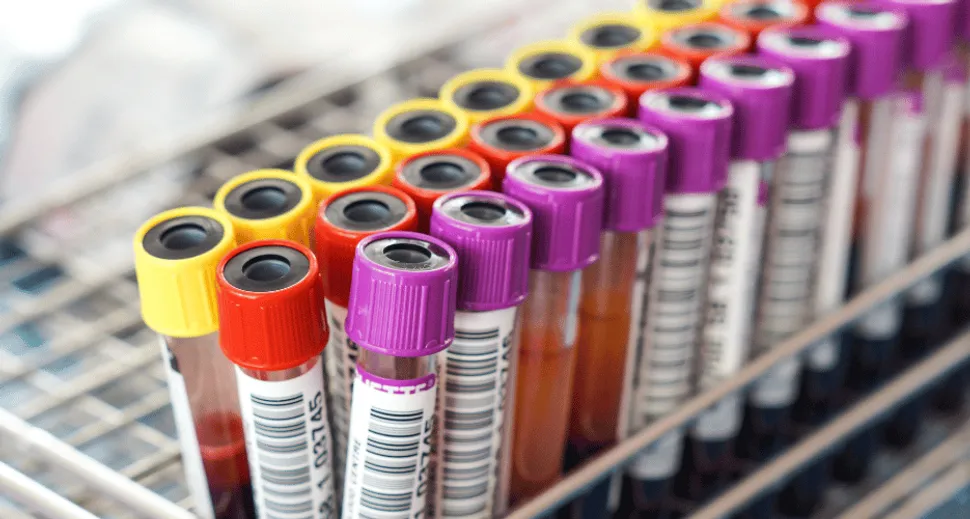Blood-Based Single Cell Sequencing Holds the Key to Better Treatment Outcomes

One of the challenges in treating myeloma is that it can evolve or change over time, which can make it resistant to therapy. However, a new study presented by Dr. Goldsmith at the 64th Annual Meeting of the American Society of Hematology (ASH 2022) is working to better understand how myeloma develops resistance, and how to better target therapy-resistant cells by using single-cell sequencing in peripheral blood and overlaying it with minimal residual disease testing by NGS, which was found to be highly sensitive to find myeloma cells in peripheral blood at a very deep level.
Dr. Goldsmith’s study was part of a group of articles presented by the myeloma division of the City of Hope at ASH 2022, with other members presenting on topics such as bispecific antibodies and drug resistance. You can hear more about their presentations in the following video:
More on Dr. Goldsmith’s study
The study, led by Scott Goldsmith, MD of the City of Hope in Duarte, California, aimed to identify a specific type of myeloma cell called "clonotypic" myeloma cells that may be involved in resistance to therapy. The researchers used a technique called single-cell analysis in blood samples, which allowed them to look at individual cells in great detail, to try to find these clonotypic cells.
The study is a pilot study, which means that it was done with a small number of patients. However, the results are promising and suggest that it may be possible to use minimal residual disease sequencing data (by NGS) and single-cell analysis in peripheral blood samples to better understand the biology of myeloma and resistance to therapy of each patient, which could lead to new therapies that are targeted at specific populations of cells that are therapy-resistant.
Key Findings
Dr. Goldsmith’s study showed a way to find the myeloma cells involved in therapy resistance in a blood sample and potentially target them with new therapies. This was done by overlaying single-cell sequencing and minimal residual disease testing by NGS in peripheral blood to identify a specific type of myeloma cells called "clonotypic" myeloma cells, which may be involved in therapy resistance.
Reference
Scott R. Goldsmith, Reyka G. Jayasinghe, Jonathan Adam Scolnick, Jaren Sia, Mark A Fiala, Michael J Slade, Tianjiao Wang, Li Ding, Ravi Vij; Needle in a Haystack: A Pilot Study Combining Single-Cell Multiomics with Clinical NGS-MRD Sequencing to Search for Circulating Clonotypic Dedifferentiated Myeloma Cells. Blood 2022; 140 (Supplement 1): 9945–9946. doi: https://doi.org/10.1182/blood-2022-169604
One of the challenges in treating myeloma is that it can evolve or change over time, which can make it resistant to therapy. However, a new study presented by Dr. Goldsmith at the 64th Annual Meeting of the American Society of Hematology (ASH 2022) is working to better understand how myeloma develops resistance, and how to better target therapy-resistant cells by using single-cell sequencing in peripheral blood and overlaying it with minimal residual disease testing by NGS, which was found to be highly sensitive to find myeloma cells in peripheral blood at a very deep level.
Dr. Goldsmith’s study was part of a group of articles presented by the myeloma division of the City of Hope at ASH 2022, with other members presenting on topics such as bispecific antibodies and drug resistance. You can hear more about their presentations in the following video:
More on Dr. Goldsmith’s study
The study, led by Scott Goldsmith, MD of the City of Hope in Duarte, California, aimed to identify a specific type of myeloma cell called "clonotypic" myeloma cells that may be involved in resistance to therapy. The researchers used a technique called single-cell analysis in blood samples, which allowed them to look at individual cells in great detail, to try to find these clonotypic cells.
The study is a pilot study, which means that it was done with a small number of patients. However, the results are promising and suggest that it may be possible to use minimal residual disease sequencing data (by NGS) and single-cell analysis in peripheral blood samples to better understand the biology of myeloma and resistance to therapy of each patient, which could lead to new therapies that are targeted at specific populations of cells that are therapy-resistant.
Key Findings
Dr. Goldsmith’s study showed a way to find the myeloma cells involved in therapy resistance in a blood sample and potentially target them with new therapies. This was done by overlaying single-cell sequencing and minimal residual disease testing by NGS in peripheral blood to identify a specific type of myeloma cells called "clonotypic" myeloma cells, which may be involved in therapy resistance.
Reference
Scott R. Goldsmith, Reyka G. Jayasinghe, Jonathan Adam Scolnick, Jaren Sia, Mark A Fiala, Michael J Slade, Tianjiao Wang, Li Ding, Ravi Vij; Needle in a Haystack: A Pilot Study Combining Single-Cell Multiomics with Clinical NGS-MRD Sequencing to Search for Circulating Clonotypic Dedifferentiated Myeloma Cells. Blood 2022; 140 (Supplement 1): 9945–9946. doi: https://doi.org/10.1182/blood-2022-169604

about the author
Arturo Hurtado
Arturo Hurtado is an International Medical Graduate who Joined HealthTree in 2020 as part of The Patient Experience team. He helps patients understand their disease panorama and navigate their myeloma through the tools and resources that HealthTree provides. He is an enthusiastic photographer, tech nerd, and aspiring food explorer who loves to travel and find new exciting experiences.
More on Treatment Advances
Trending Articles
Upcoming Events




Get the Latest Multiple Myeloma Updates, Delivered to You.
By subscribing to the HealthTree newsletter, you'll receive the latest research, treatment updates, and expert insights to help you navigate your health.
Together we care.
Together we cure.
3x Faster.












